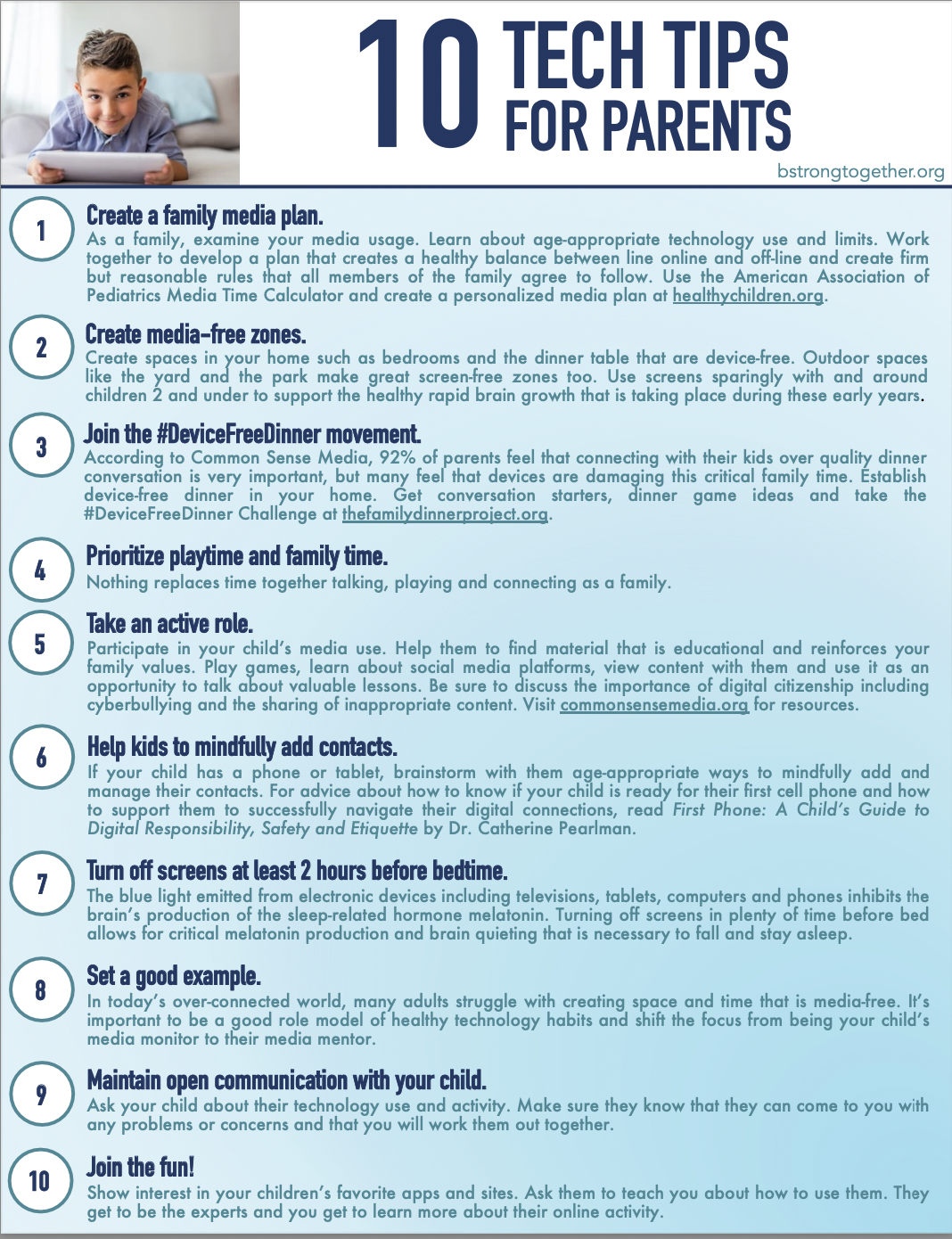
Family Tech Tips
by Kyle Kick
BStrong Together Executive Director
The beginning of the school year is the perfect time to examine technology and media use in your home. Here are some tips for creating healthy media habits in your family.
Create a family media plan. As a family, examine your media usage and work together to develop a plan that creates a healthy balance between life online and off-line. Learn about age-appropriate technology usage and limits. Create firm but reasonable rules that all members of the family agree to follow. Use the American Academy of Pediatrics Media Time Calculator and create a personalized family media plan at HealthyChildren.org.
Create media-free zones. Create spaces in your home such as bedrooms and the dinner table that are device-free. Outdoor spaces like the yard and the park make great screen-free zones, too. Use screens sparingly with and around children 2 and under to support the healthy rapid brain growth that is taking place during these early years.
Join the #DeviceFreeDinner movement. According to Common Sense Media, 92% of parents feel that connecting with their kids over quality dinner conversation is very important, but many feel that devices are damaging this critical family time. Establish device-free dinner in your home. Get conversation starters, dinner game ideas, and take the #DeviceFreeDinner Challenge atThe Family Dinner Project.
Download and print our 10 Tech Tips for Parents handout.
(En Espanol)
Prioritize play and family time! Nothing replaces time together talking, playing, and connecting as a family. In a recent report, the American Academy of Pediatrics is now calling for pediatricians to stress the importance of play in healthy child development.
Take an active role. Participate in your child’s media use. Help them to find material that is educational and reinforces your family values. Common Sense Media can be a useful tool. Play games with them, learn about social media platforms they are on, view content with them and use it as an opportunity to talk about lessons learned. Be sure to discuss the importance of digital citizen including cyberbullying and the sharing of inappropriate content.
Help kids to mindfully add contacts. If your child has a phone or tablet, brainstorm with them age-appropriate ways to mindfully add and manage their contacts. For advice about how to know if your child is ready for their first cell phone and how to support them to successfully navigate their digital connections, visit Raising Digital Natives.
Turn off screens at least 2 hours before bedtime. The blue light emitted from electronic devices including televisions, tablets, computers, and phones inhibits the brain’s production of the sleep-related hormone melatonin. Turning off screens in plenty of time before bed allows for critical melatonin production and brain quieting that is necessary to fall and stay asleep.
Set a good example. In today’s over-connected world, many adults struggle with creating space and time that is media-free. It’s important to be a good role model of healthy technology habits. In her book, Screenwise: Helping Kids Thrive (and Survive) in Their Digital World, upcoming BStrong Together guest speaker Dr. Devorah Heitner stresses the importance of adult modeling and shifting the focus from being our kids’ media monitor to their media mentor.
Maintain open communication with your child. Ask your child about their technology use and activity. Make sure that they know that they can come to you if they have a problem or a concern and that you will work it out together.

